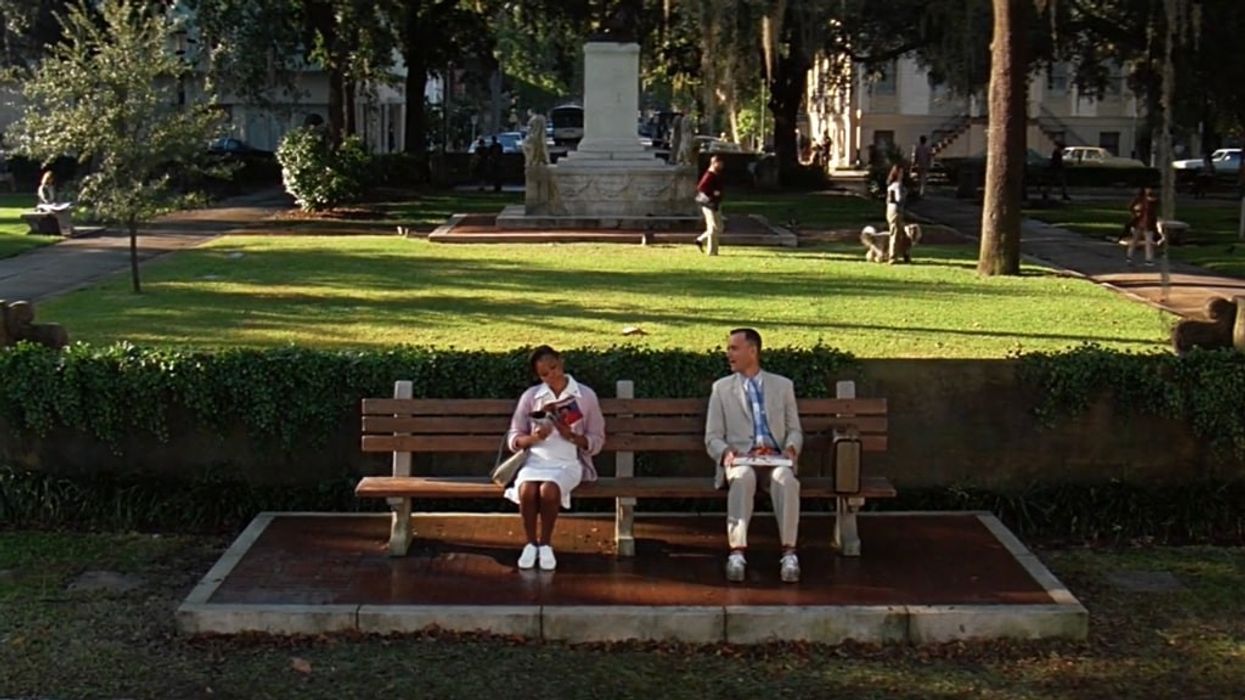How You Can Recreate the Lighting from This Nostaglic Scene
Despite the many great moments in this film, no scene is as visually stunning as the bench scene.

Forrest Gump is a beloved film. Whether or not you've watched it, you are probably aware of the cultural weight the film carries. Although it has many quotable moments, the direction and cinematography of the film hold a beautiful simplicity to it that immediately evokes a sense of nostalgia.
The 1994 film stars Tom Hanks as Forrest Gump, an earnest Vietnam War veteran, who accidentally partakes in the movie’s pivotal pop culture moments of the 1960s and 1970s. The film is mostly told through backstory, flashing back to the present where Forrest is waiting on a bus stop bench and reflecting on his life with strangers.
Hanks doubted that anyone would care about a man sitting on the bench, telling the ReelBlend podcast, “I will tell you, in Forrest Gump, all the stuff that we shot on the park bench in Savannah, Georgia… we were just shooting fodder for a possible narrative piece of it.”
Since then, the bench scene has become an image of pop culture, eliciting a weight of nostalgia in the heart with its location, characters, and light, one of cinema’s most powerful tools.
Lewis Potts breaks down how director Robert Zemeckis and cinematographer Don Burgess shot the bench scene in Forrest Gump. By using natural light, three large diffusers, and multiple camera angles, you can recreate the scene to make your next dialogue scene more interesting.
How to light the iconic scene
The bench scene is really a simple setup that you can do on a budget. All you need is a single location, a camera, three large white diffusion frames, and large lights.
Around the bench, the diffusion frames should be placed in front of the bench to control the sunlight from hitting the bench directly. Behind the diffusion, place the large lights. Larger units will create a softer light that looks almost like natural light.
When you watch the bench scenes throughout Forrest Gump, you will notice that the natural sunlight is bouncing around. The continuity doesn’t seem to matter in this Best Picture winner, so you are good also as long as the sun is in the background.
Potts does note that the style of cinematography used in Forrest Gump is slightly outdated.
Instead of using three large white diffusion frames, Potts notes that modern cinematographers will use one black frame on the opposite side of the camera to add more contrast to one side of the actor’s face. The other two diffusion frames are still bouncing or diffusing the light to create ambient daylight.
The setup is very simple, yet effective. You can easily create this scene for your project to create a nice soft daylight look that feels as nostalgic as Forrest Gump.
Do you have any other tips for recreating this iconic bench scene? Let us know in the comments below!
Source: Lewis Potts











